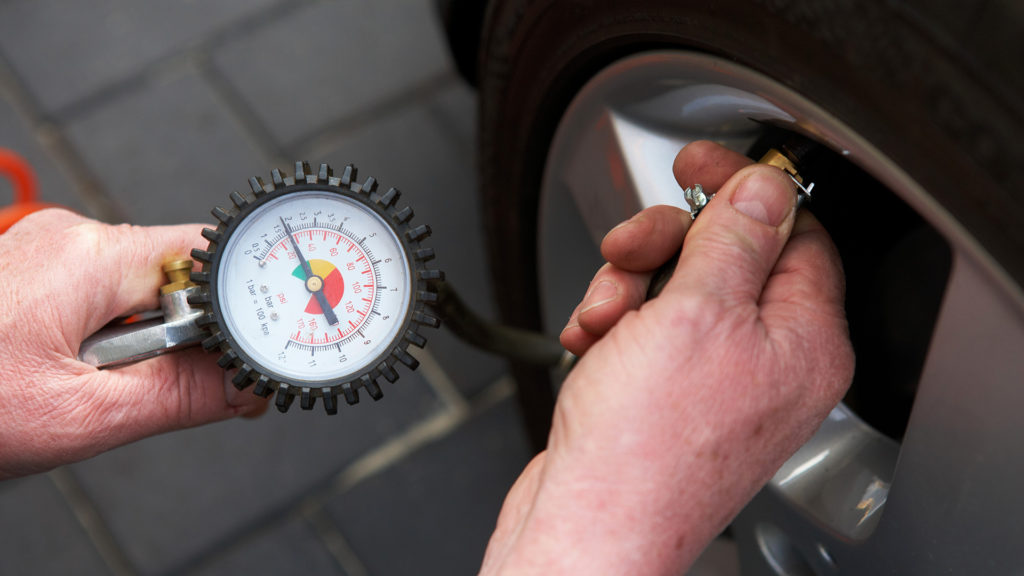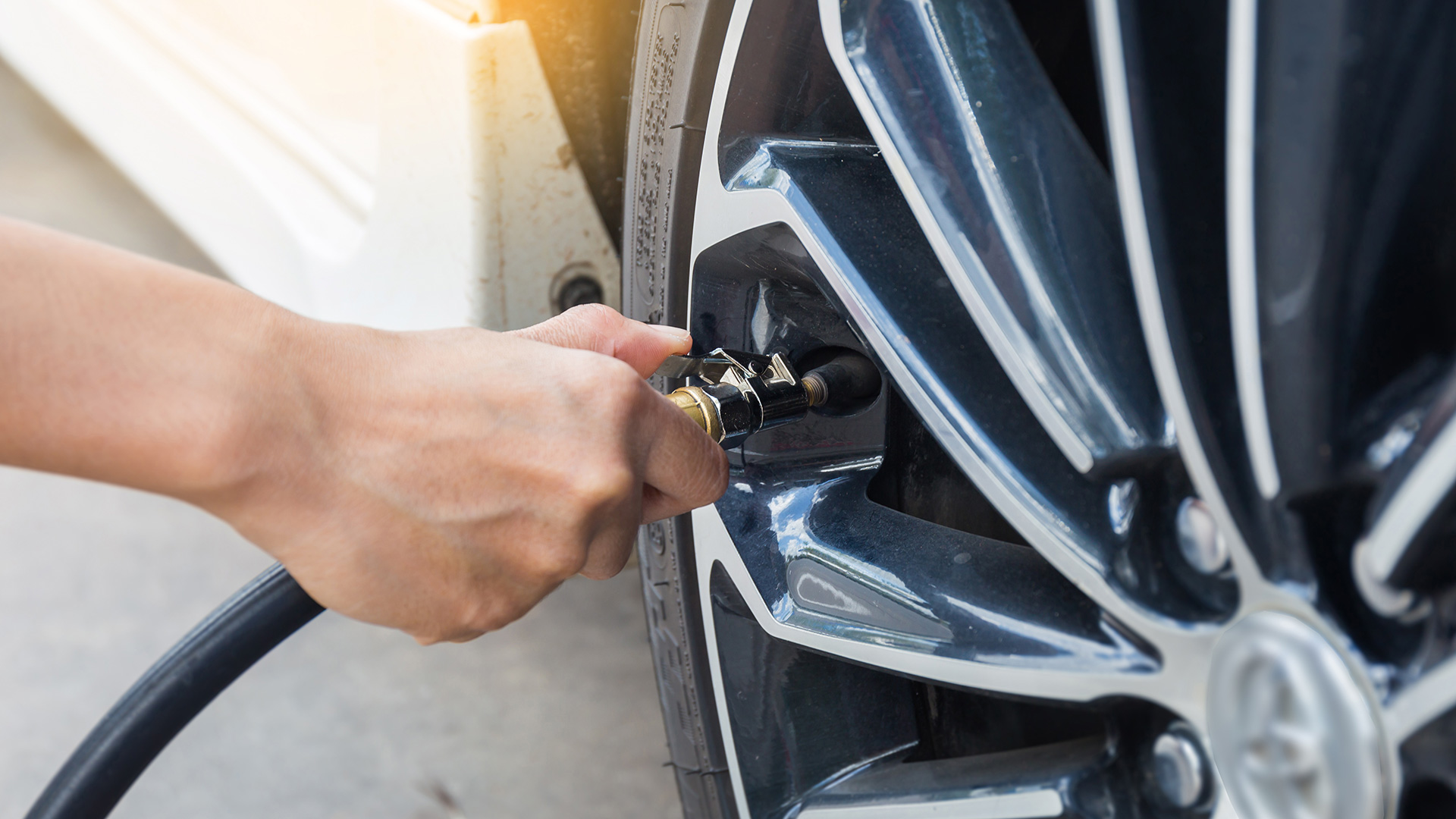For most drivers, tire inflation doesn’t even cross their mind until their vehicle’s tire pressure monitoring system (TPMS) gives them an alert. Other drivers might even completely ignore their tire pressure until they have a flat tire. If you’re one of these types of drivers, we’re hoping this article will convince you to pay closer attention to your tire pressure, because ultimately it’s unsafe to drive on underinflated or overinflated tires and it costs you money.
How underinflated tires affect your car
According to fueleconomy.gov, underinflated tires can lower gas mileage by about 0.2% for every 1 PSI drop in the average pressure of all tires. The official U.S. government source for fuel economy information also says that you can improve your fuel economy by 0.6% on average or even up to 3% in some cases by keeping your tires properly inflated.
To get a better idea of how underinflated tires affect fuel economy, we can look at this study conducted by researchers at Oak Ridge National Laboratory. They took a 2009 Toyota Corolla and tested it with all four tires at the recommended tire pressure, and then underinflated them to 75% of the recommended pressure, and then again at 50% of the recommended pressure. At 75%, fuel economy consistently dropped by 2% to 3% over speeds from 40 mph to 80 mph. When the tires were at 50% of their recommended pressure, the study found fuel economy to drop about 10% at 40 mph, and about 5% at 80 mph.
Although this report was originally published in 2007, it outlines the dangers of driving on underinflated tires. Published by the United States Government Accountability Office, the report states “vehicles with underinflated tires have had handling problems that caused crashes resulting in fatalities and injuries.” Underinflated tires were also found to “impact a driver’s ability to control a vehicle against skidding, blowouts, and other tire failures.” As evidence, a 1999 NHTSA study showed underinflated tires contributed to 247 of 32,061 fatalities and 23,100 of almost 3 million injuries. At the time, NHTSA estimated that 41 vehicular-related deaths occurred annually due to underinflated tires.
Simply put, you’ll have less control of your vehicle when your tires aren’t properly inflated. Underinflated tires increase the risk of skidding, hydroplaning, flat tires, and blowouts, as well as increasing the stopping distance for your vehicle. And that’s all in addition to lowering your fuel economy, which ultimately costs you money at the pump. Finally, driving on underinflated tires also causes excess wear, which means you’ll be replacing your tires earlier than you should. That’s another cost you should consider, since you aren’t getting the full life from your tires.

How overinflated tires affect your car
While it’s not as common, it’s worth mentioning the issues that are caused by driving on overinflated tires. To learn more about this, we turn to the experts at Firestone Complete Auto Care. According to Firestone, overinflated tires are at a greater risk of a blowout and could compromise some of your car’s driver assistance functions. When tires are overinflated, they are more stiff and less flexible, making them more prone to damage from potholes or debris on the roadways. It also affects your car’s ride quality, as you’ll feel all the bumps and dips on the road.
Overinflated tires also cause excess wear, as detailed by Michelin, one of the world’s largest and most reputable tire manufacturers. Since the center of the tread will bear most of the load on overinflated tires, it’ll wear out faster than the outside edges. Once again, that means you’re not getting the full life out of your tires and that’ll impact your wallet having to replace them sooner than expected.
How to make sure you drive on properly inflated tires
How do you ensure that you’re driving on properly inflated tires? For starters, you’ll want to own a tire pressure gauge and a portable tire inflator. The latter will allow you to add air to your tires without having to find a public air compressor. Routinely check that your tire pressure is within the manufacturer’s suggested specifications and use your portable tire inflator to add air when needed.
Where to find your recommended tire pressure
On most modern vehicles, you’ll be able to locate a label on your driver’s side door jamb that shows the recommended tire pressure for your vehicle. Pay close attention to the figures, because some vehicles will have different recommendations for the front and rear tires. If the label can’t be found on your driver’s side door jamb, check your fuel door or glove box. If you still aren’t able to locate the label, refer to your owner’s manual.
Why can’t I rely on my TPMS?
Your car’s TPMS is designed to only notify you when your tire’s pressure is below a certain threshold — typically 25% lower than the recommended tire pressure. While that is helpful, one study shows driving 25% underinflated results in a 2% to 3% loss in fuel economy. In other words, if you wait until your TPMS alerts you to add air into your tires, you’ve already sacrificed fuel economy. It’s best to rely on your TPMS to let you know when you have a fast leak or a flat tire, not when your tires are underinflated by a few PSI.
